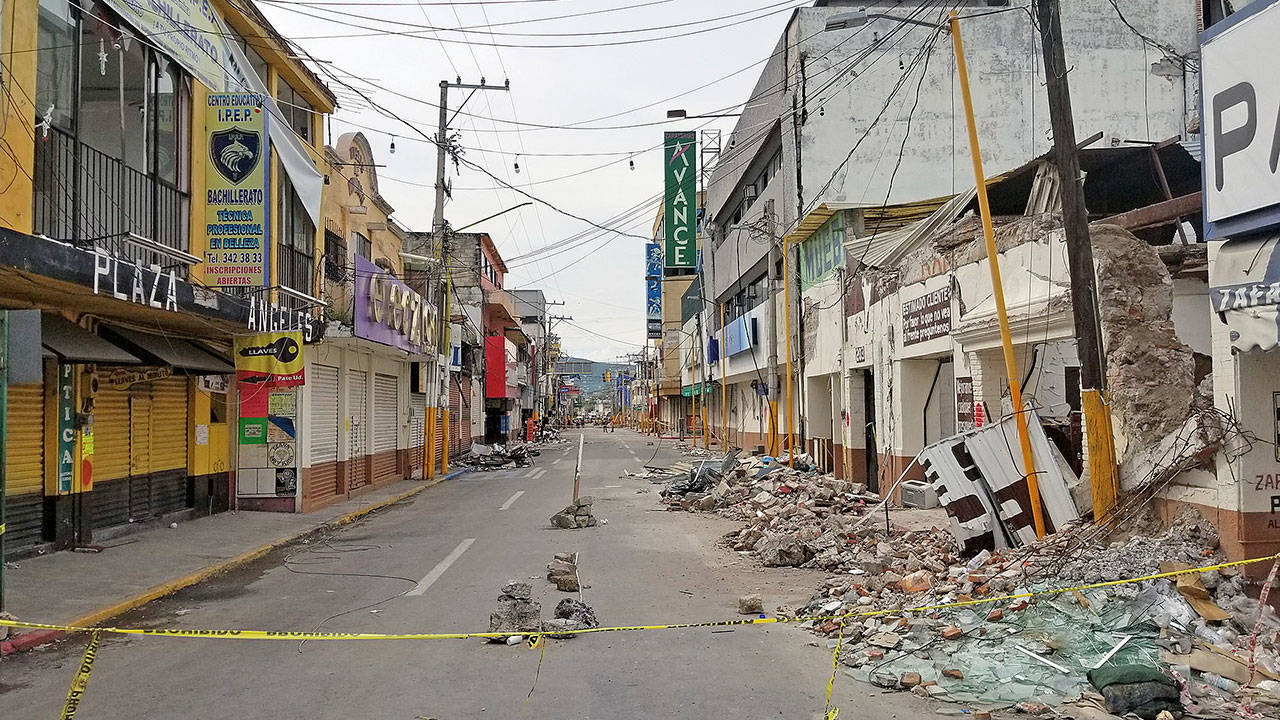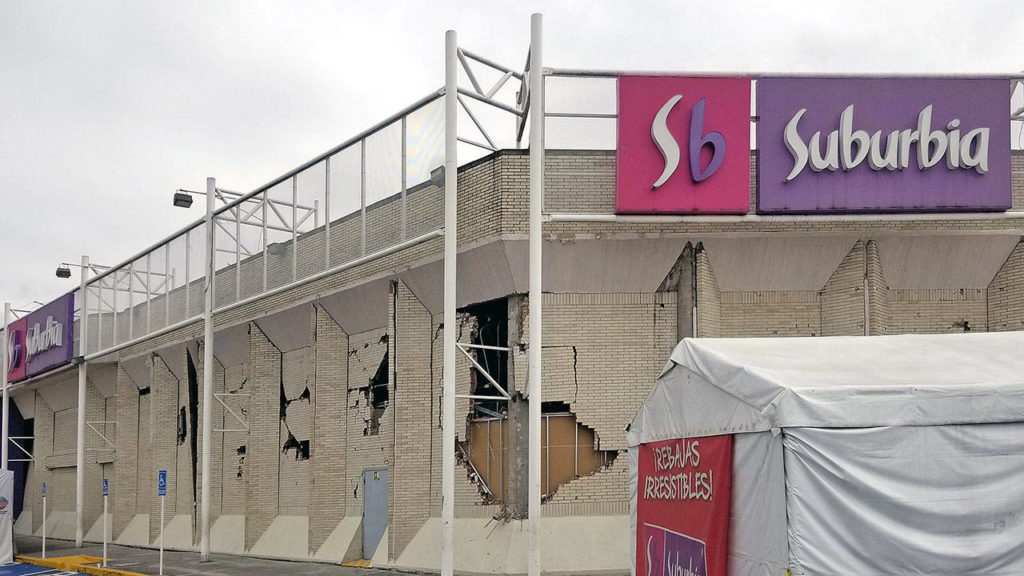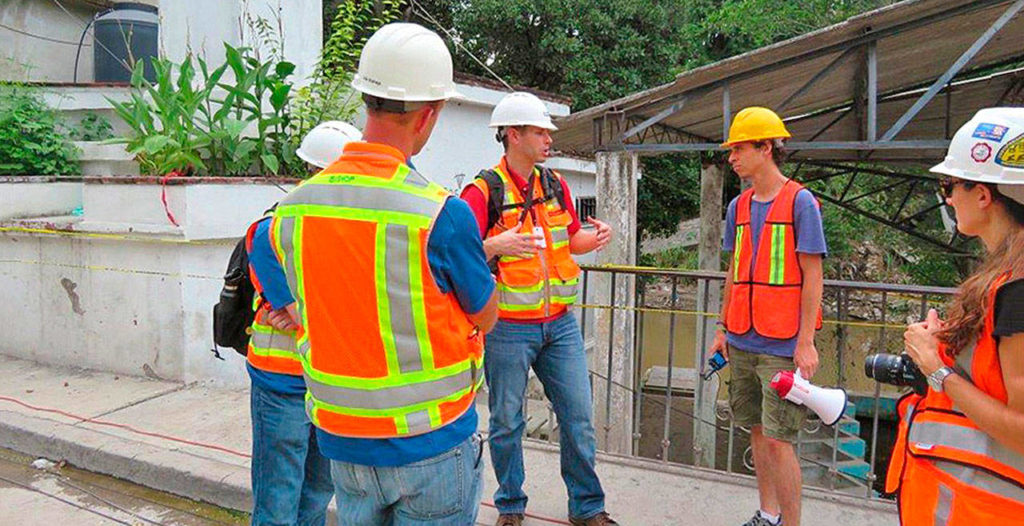EVERETT — Kobe in 1995. Wenchuan in 2008. Christchurch in 2010. Dave Swanson rattles off the names and dates like well-remembered lines.
The Everett engineer has traveled the globe chasing earthquakes during the past three decades, helping with recovery and learning what he can to minimize damage from future ones.
“Failure teaches us a lot about good design,” Swanson said. “So if we see how something breaks and doesn’t perform we can figure out ways to make it perform better.
“Our building codes get improvements in them, by and large, because of the investigative work that engineers do and building officials and public officials do after these catastrophes.”
Swanson, who works for Reid Middleton in Everett, has mostly crisscrossed the Pacific Ocean on these expeditions, heading to Japan, China, Chile and New Zealand. He also worked on the Nisqually earthquake in the south Puget Sound area and journeyed to Haiti in 2010.
Most recently, he and a team of other engineers traveled to Mexico City after the Sept. 19 earthquake that killed hundreds and injured thousands. At least 40 buildings collapsed and thousands of others were damaged.
He and other engineers lend their expertise and skill volunteering to inspect buildings. That usually includes placing red, yellow and green tags to alert people about the safety of the buildings.
“You don’t just want to show up and be a disaster tourist and take a bunch of pictures and then leave,” Swanson said. “That’s not cool. You need to participate in some ways that are meaningful.”
In their free time, the engineers travel around the region learning from the damage. Why does one building collapse but another stays upright? Which building designs worked and which failed? What materials proved safe and which proved to be hazardous?
These questions can be answered in laboratory tests, but it’s more efficient heading into the field, Swanson said.
“A test in the lab at the University of Washington can cost between $20,000 to $150,000,” Swanson said. “If you’re witnessing earthquake damage firsthand in another community, you’re literally looking at hundreds, if not thousands, of tests.”
Reid Middleton engineer Erik Bishop has traveled to three earthquake sites, the first in Wenchuan, China, in 2008. He was a graduate student at UW at the time, taking classes from Swanson. Witnessing the aftermath helped take his studies from the abstract to the tangible, he said.
“It certainly changed how I thought about the building code requirements and how I interact with contractors,” Bishop said.
Building codes can seem onerous, especially to those footing the bills, Swanson said. He jokes that the perfect building for an engineer is square with no windows on really good, flat soil. Traveling to a disaster zone reinforces why codes are so stringent.
In Mexico City, the team included Swanson, Bishop and six other Reid Middleton engineers, two other Puget Sound-area engineers and an Oregon State University professor. They went in two groups and stayed 12 days. Swanson has paid his own way on some of these trips. On this one, Reid Middleton paid to send its engineers.
There were parallels from Mexico City and the Nisqually earthquake in 2001, Bishop said. The earthquakes were of similar magnitude — 6.8 for Nisqually and 7.1 for Mexico City. Both occurred outside of the main population area, but the cities suffered extensive damage. And Mexico City, built on an ancient lake bed, has soft soil through which earthquake damage can be amplified, much like the soft soil found in this region.
There are differences, as well. Mexico City has a confined masonry architectural style that is vulnerable to earthquakes. The U.S. doesn’t have that type of architectural style. Mexico has an early warning system in place; it’s not fully rolled out in the U.S.
ShakeAlert is the early alert system designed for the West Coast. It’s being developed by the U.S. Geological Survey with the UW, University of California, Berkeley and Caltech, along with several scientists.
The system is “in transition between being a researchy test thing and an actual operating system,” said Bill Steele, the Seismology Lab coordinator at UW. Right now, the ShakeAlert system is beginning to send messages to water districts.
Water is needed for drinking and fighting fires after disasters, Steele said.
Next year, they’d like to send alerts to schools, first responders, transportation agencies such as WDOT, utilities and some major employers, such as Boeing and Amazon.
Why not send text alerts to everybody? That many messages would clog telecommunication systems, and people wouldn’t get the messages in time for them to be of help.
“We’re working our way down that path, but it’s not there yet,” Steele said.
The system is also underfunded. It costs $16 million a year, but the federal government only allocated $10 million this year.
That’s a large number, but Steele points out that a massive earthquake could cost hundreds of billions of dollars in damage. An early alert could give time to shut off utilities to prevent damage such as flooding or electrical fires.
Swanson said early warning systems save lives.
“We saw that in Japan,” he said. “I believe that happened in Mexico City. The investments we’re making at the federal level and state level, I think, are also going to do the same thing in the U.S.”
The U.S. is on a good trajectory, making schools, hospitals and military installations more earthquake resistant, Swanson said. Building codes make modern buildings earthquake resistant, as well.
Still, many buildings were constructed before modern seismological standards, Swanson said.
“We have a lot of buildings in our communities that appear to be very strong and stout,” Swanson said. “They’re made out of brick and mortar and they’re massive, and you’re, like, ‘Wow that’s a big strong building.’
“But they’re not really that tough if they start to bend, they’ll break, and if they start to break they’ll fall apart. I don’t think our public by and large fully appreciates that like the engineering and architecture community does.”
The team included: Swanson and Bishop; Reid Middleton engineers David Gonzalez; Nicole Trujillo; Darin Aveyard; Kenny O’Neill; Kevin Galvez; Drew Nielson; and Humberto Caudana, a postdoctoral researcher with UC San Diego; Mark Pierepiekarz, president, MRP Engineering in Newcastle; Brian Knight, president, WRK Engineers, Vancouver, Washington; and Oregon State University assistant professor Erica Fisher.
Jim Davis: 425-339-3097; jdavis@ heraldnet.com. Twitter: @HBJnews.
Talk to us
> Give us your news tips.
> Send us a letter to the editor.
> More Herald contact information.



























